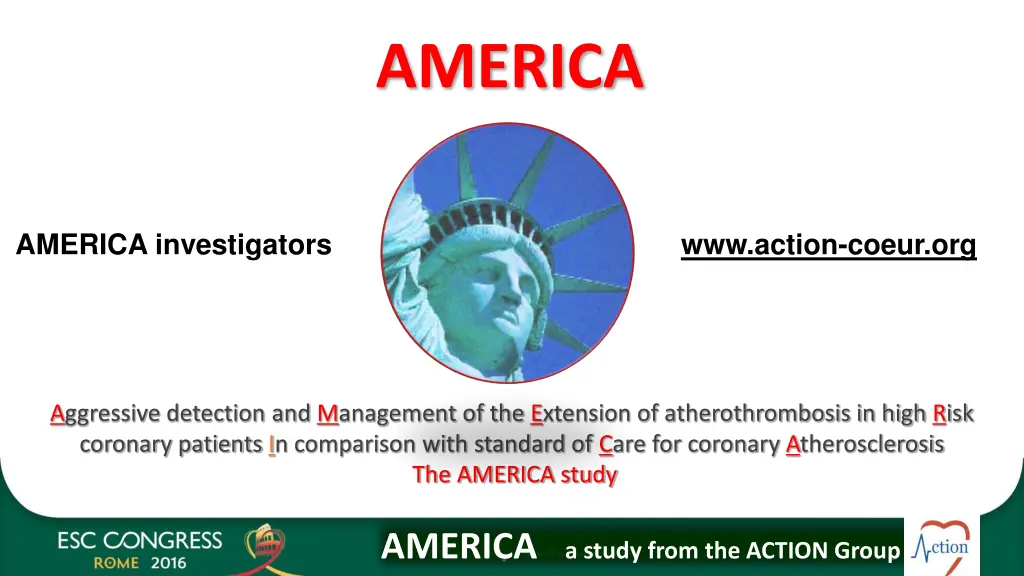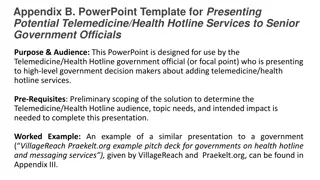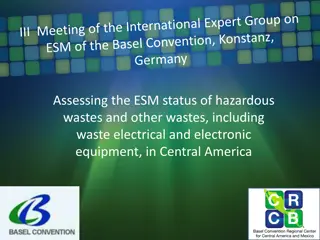
Aggressive Detection and Management of Atherothrombosis in High-Risk Coronary Patients - The AMERICA Study
The AMERICA study, conducted by the ACTION Group, focuses on aggressive detection and management of atherothrombosis in high-risk coronary patients compared to standard care for coronary atherosclerosis. It aims to evaluate the extension of atherothrombosis and the effectiveness of systematic identification and treatment of multisite artery disease. The study involves multiple research grants and collaboration with various medical institutions and investigators across France.
Download Presentation

Please find below an Image/Link to download the presentation.
The content on the website is provided AS IS for your information and personal use only. It may not be sold, licensed, or shared on other websites without obtaining consent from the author. If you encounter any issues during the download, it is possible that the publisher has removed the file from their server.
You are allowed to download the files provided on this website for personal or commercial use, subject to the condition that they are used lawfully. All files are the property of their respective owners.
The content on the website is provided AS IS for your information and personal use only. It may not be sold, licensed, or shared on other websites without obtaining consent from the author.
E N D
Presentation Transcript
AMERICA AMERICA investigators www.action-coeur.org Aggressive detection and Management of the Extension of atherothrombosis in high Risk coronary patients In comparison with standard of Care for coronary Atherosclerosis The AMERICA study AMERICA a study from the ACTION Group
Disclosures Research grants from Bristol-Myers Squibb, Sanofi-Aventis, Eli Lilly, Guerbet Medical, Medtronic, Boston Scientific, Cordis, Stago, Centocor, Fondation de France, INSERM, Federation Francaise de Cardiologie, and Soci t Fran aise de Cardiologie; Consulting fees from Sanofi-Aventis, Eli Lilly, and Bristol-Myers Squibb; and lecture fees from Bristol-Myers Squibb, Sanofi-Aventis, and Eli Lilly. AMERICA a study from the ACTION Group
AMERICA: Study organization ACTION Study Group (www.action-coeur.org) Academic Coordinating Center: Institute of Cardiology - Piti -Salp tri re, Paris Academic Sponsor: AP-HP, Paris Academic Global Trial Operations: URC - Lariboisi re, Paris Funding: ACTION, Institut de l Ath rothrombose Steering Committee: G. Montalescot, JP Collet, G. Cayla, E. Vicaut, Investigation sites : 28 French Intervention Centers AMERICA a study from the ACTION Group
Centers and principal investigators CHU Rennes, Dr LEBRETON, BEDOSSA, BOULMIER CHU Piti -Salp tri re, Paris, Drs Montalescot/Collet CHU Caen, Dr BEYGUI, SABATIER H pital de la Timone, Marseille, Dr Cuisset CHU Nantes, Dr FRESSONNET CH de Chartres, Dr Rang CH Arras, Dr BEAREZ CHU Car meau, N mes, Dr Cayla CH Saint-Brieuc, Dr Mouquet, CLERC CHU Montpellier, Dr Leclercq CHU Dijon, Dr COTTIN, LHUILLIER, LORGIS, BUFFET CH de Lagny, Marne-la-Vall e, Drs Elhadad CH Cholet, Dr BOUVIER H pital Lariboisi re, Paris, Dr Henry, Sirol CHU Amiens, Dr JARRY CHU Saint-Antoine, Paris, Dr Cohen, Boccara, Edhery CH Albi, Dr GALEY H pital de Rangueil, Toulouse, Dr Carri CH Rambouillet, Dr FOURME CH Annecy, Dr Belle CH de Versailles, Dr LIVAREK CHRU Lille, Drs Ennezat/Van Belle AMERICA a study from the ACTION Group
AMERICA Study: Rationale (1) Coronary artery disease the most frequent and severe location of atherosclerosis Symptomatic multisite artery disease (MSAD) integrator of the global CV risk The prevalence and associated-risk of asymptomatic MSAD in high risk coronary patients are unknown. Whether systematic identification of MSAD and treatment when appropriate combined with an aggressive secondary prevention is relevant has not been evaluated. AMERICA a study from the ACTION Group
AMERICA Study: Rationale (2) To demonstrate the superiority of a pro-active strategy of detection and management of the extension of atherothrombosis to other territories than coronary combined pharmacological secondary prevention strategy in a population with very high risk features of coronary disease (pro-active strategy) As compared with a conservative strategy based on a clinically-guided identification of MSAD and standard pharmacological treatment (conventional strategy). with an aggressive AMERICA a study from the ACTION Group
Study Design AMERICA a study from the ACTION Group
Pro-active strategy Conventional strategy ABI, duplex ultrasound or any other imaging procedure Detection of A MSAD DAPT for 12 months after ACS DAPT for 6 months after DES DAPT for one month after BMS DAPT during 24 months Antiplatelet agent Target LDL c levels < 70 mg/dl Minimal effective dose Lipid lowering therapy Systematic use LVEF 40 % and/or MI or hypertension ACE inhibitors After AMI or if LVEF<40% and Cr.Cl> 30 ml/min No specific recommendations Aldosterone blockade Systematic with target resting rate <60 bpm. Only after MI or LVdysfunction. Use of beta-blockers < 140/90 mm Hg in non-diabetic patient < 130/80 in diabetics or renal dysfunction No specific recommendations Blood pressure control Systematic search of glycemic abnormalities Achieved HBA1c < 7% No specific recommendations Management of diabetes Smoking cessation with active counseling Promotion of regular physical activity Promotion of influenza vaccination Lifestyle No specific recommendations AMERICA a study from the ACTION Group
Definitions of MSAD Aortic arch lesion was defined as any ulcerated and mobile plaque of > 4mm width Significant extra-cranial carotid artery lesions: stenosis of 70% using duplex ultrasonography (DUS) or any other morphological investigation. Atherosclerotic renal artery disease: lesion of 60% or more using DUS any other morphological investigation. Asymptomatic aortic aneurism: ascending aorta of 45 mm or abdominal aorta of 50 mm using DUS any other morphological investigation. Lower extremity artery disease (LEAD): Ankle brachial index of <0.9 or any stenosis of 70% or more using DUS or any other morphological investigation. The prevalence of asymptomatic MSAD was defined as the presence of any above lesion. AMERICA a study from the ACTION Group
AMERICA Study: Inclusion criteria Patients ( 18 years) with recent (<6 months) established three-vessel disease defined as 70 % or more diameter stenosis in three vessels (Profile 1) Recent (< 1month) acute coronary syndrome in elderly patient ( 75 years) defined by at least two of the following criteria (Profile 2): Ischemic symptoms over 10 minutes Electrocardiographic abnormalities : ST segment depression 0.1 mV ( 1 mm) or ST transitory elevation (< 30 min) in the ST segment 0.1 mV ( 1 mm) or ST elevation>1 mm or more in two or more contiguous leads or new left bundle branch block Positive troponin I or T (as defined locally) AMERICA a study from the ACTION Group
AMERICA: Study Endpoints Primary endpoint : death, any ischemic event leading to rehospitalization or any evidence of organ failure during the two-year follow-up period. Organ failure: acute heart failure, new cognitive dysfunction, acute or worsening renal failure, new atrial or ventricular arrhythmia, and malignant hypertension. Main secondary endpoint: All-cause death, MI, stroke or any revascularization. Prespecified end points: prevalence of MSAD, each individual component of the primary end point, the number of hospitalizations. The main safety end point: major bleeding (TIMI) AMERICA a study from the ACTION Group
AMERICA Study: Statistical methodology Considering a 24 month event rate in the conventional group at 33%*, a total sample size of N= 526 patients were needed to have a 80% power to detect a difference between the 2 strategies corresponding to an hazard ratio HR = 0.6 ( a 10% attrition rate was considered) All efficacy analyses were based on the intention-to-treat principle using the full analysis set The time from randomization to the first occurrence of any event for a given endpoint was compared using the Cox proportional hazards model at a 5% two-sided significance level Interactions between treatment assignment and pre-specified subgroups were evaluated by including terms for treatment, subgroup and treatment-by-subgroup interaction in the Cox model * JAMA 2003;289:1117 1123. AMERICA a study from the ACTION Group
AMERICA: Consort diagram AMERICA a study from the ACTION Group
Pro-active group (n=263) Conventional group (n=258) Baseline Characteristics ACS in elderly (%) 43% 40% Age: mean ( %>75) 77.7 (60%) 76.0 (58%) Women 76 (28.9%) 67 (26.0%) Current smoker 38 (14.4%) 35 (13.6%) Hypertension 170 (64.6%) 180 (69.8%) Diabetes 71 (27.0%) 63 (24.4%) Dyslipidemia 147 (55.9%) 150 (58.1%) Severe renal failure 9 (3.4%) 11 (4.3%) Prior myocardial infarction 52 (19.8%) 62 (24.0%) Prior PCI 54 (20.5%) 61 (23.6%) Peripheral artery disease 22 (8.4%) 28 (10.9%) Prior Stroke 20 (7.6%) 13 (5.0%) AMERICA a study from the ACTION Group
Clinical status at randomization Pro-active group (n=263) Conventional group (n=258) Atrial fibrillation 20 (7.6%) 20 (7.8%) ACS 212 (80.6%) 207 (80.2%) Percutaneous coronary intervention 201 (76.4%) 201 (77.9%) Drug Eluting stent 82 (31.2%) 73 (28.3%) Bare Metal Stent 119 (45.2%) 128 (49.6%) Coronary artery bypass graft 22 (8.4%) 21 (8.1%) Left ventricle ejection faction < 40% 42 (16.0%) 35 (13.6%) Cognitive dysfunction 30 (19.0%) 29 (19.3%) AMERICA a study from the ACTION Group
AMERICA Study: Baseline Characteristics Pro-active group (n=263) Conventional group (n=258) Treatment at randomization Aspirin 258 (98.1%) 250 (96.9%) Clopidogrel 234 (89.0%) 221 (85.7%) Betablockers 231 (87.8%) 208 (80.6%) ACE inhibitors 187 (71.1%) 175 (67.8%) Statin 248 (94.3%) 241 (93.4%) Aldosterone blockade 18 (6.8%) 13 (5.0%) VKA 26 (9.9%) 26 (10.1%) Insulin 37 (14.1%) 26 (10.1%) AMERICA a study from the ACTION Group
AMERICA: Pro-active strategy Pro-active group Conventional group (n=258) Treatment at randomization (n=263) Screening for asymptomatic MASD 100% NA Life style changes 54% NA complete smoking cessation 61.7% NA ACE inhibitors 85.9% 71.7%* beta-blockade was given 87.8% 81.4%* Interruption of DAPT 1.2% 4.9%* AMERICA a study from the ACTION Group
Primary Endpoint at 2 years-FU* * death, any ischemic event leading to rehospitalization or any evidence of organ failure AMERICA a study from the ACTION Group
Main secondary endpoint at 2 years-FU* * All-cause death, MI, stroke or any revascularization Subjects at risk: Active arm Conservative arm 258 263 236 226 223 217 208 205 147 147 AMERICA a study from the ACTION Group
Hazard Ratio Pro-active Arm (n=263) Conventional Arm (n=258) Key secondary outcomes p-value (95% CI) All-cause mortality 23 (8.7%) 28 (10.9%) 0.78 (0.45-1.35) 0.37 Myocardial infarction 36 (13.7%) 25 (9.7%) 1.39 (0.83-2.31) 0.21 Stroke 6 (2.3%) 5 (1.9%) 1.13 (0.35-3.72) 0.83 Critical Limb ischemia 6 (2.3%) 1 (0.4%) 5.73 (0.69-47.60) 0.11 AAA fissuration 1 (0.4%) 0 (0.0%) Revascularization 77 (29.3%) 56 (21.7%) 1.36 (0.96-1.91) 0.083 PCI 63 (24.0%) 50 (19.4%) 1.21 (0.84-1.76) 0.31 Coronary artery bypass graft 17 (6.5%) 8 (3.1%) 2.04 (0.88-4.73) 0.09 Organ failure 38 (14.4%) 37 (14.3%) 0.97 (0.62-1.53) 0.91 AMERICA a study from the ACTION Group
Key seconday outcomes Hazard Ratio (95% CI) Conventional Arm (n=258) Pro-active Arm (n=263) p-value Safety endpoints All bleeding 29 (11.0%) 22 (8.5%) 1.28 (0.73-2.22) 0.38 Major bleeding (TIMI) 12 (4.6%) 13 (5.0%) 0.87 (0.40-1.91) 0.73 Hospitalizations (yes) 104 (39.5%) 85 (32.9%) 0.11 AMERICA a study from the ACTION Group
Prespecified subgroups AMERICA a study from the ACTION Group
Limitations Identification of MSAD was infrequent and revascularization was rare. Pharmacological treatment was close to optimal in both groups limiting the impact of a pro- active strategy. Side effects of pharmacological secondary prevention are obvious limitations to the pro-active strategy in elderly. Ticagrelor and prasugrel were not approved or there was no possibility to use the drugs (prasugrel 5 mg in the elderly). AMERICA a study from the ACTION Group
Limitations Benefit of aldosterone blockade and of intensified LDL-cholesterol lowering therapies were not proven at the time the study was launched. Life style changes were not satisfactory and were according to the lack of benefit of individualized education program on lifestyle risk factors to improve cardiovascular risk factors control. AMERICA was powered enough to answer our initial hypothesis with a reported event rate higher than what we anticipated. AMERICA a study from the ACTION Group
Conclusions AMERICA AMERICA a study from the ACTION Group
Conclusions Asymptomatic MSAD is identified in one out of five high risk CAD patients AMERICA does not support the routine detection of asymptomatic MSAD even in high coronary risk patients as those recruited in the trial while aggressive secondary prevention strategy appears to be the standard of care already. AMERICA a study from the ACTION Group
Back-up AMERICA a study from the ACTION Group
Localisation of MSAD (n=56) Pro-active group (n=263) Aortic arch Carotid (extra and intracranial) Aortic Abdominal Aneurism 50mm Aortic Abdominal Aneurism <50mm Renal artery disease Visceral arteries Femoro-iliac stenosis 1 (2%) 9 (4.5%) 1 (0.5%) 11 (5.9%) 6 (3.5%) 4 (2.5%) 27 (13.8%) AMERICA a study from the ACTION Group
Management of MSAD Pro-active group (n=263) ABI <0.9 Imaging procedure Rate of identification Revascularization procedures 28 (21.7%) 208 (79%) 56 (21.3%) 2 (3.7%) AMERICA a study from the ACTION Group
Independent predictors of MSAD HR 95% CI P CABG BMI (kg/m2) Kaliemia (mmol/L) 5.054 0.841 3.017 1.180-21.647 0.759-0.931 1.378-6.605 0.0290 0.0009 0.0057 AMERICA a study from the ACTION Group






















